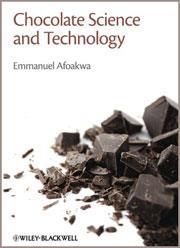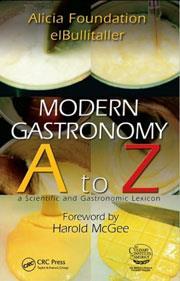Chocolate science and technology
Chocolate science and technology
Emmanuel Ohene Afoakwa
Chichester, UK: Wiley-Blackwell 2010 | 296pp | ?120.00 (HB)
ISBN 9781405199063
Reviewed by Wayne Price
This book details the complex and sometimes technically challenging aspects of creating a material that is loved by many; chocolate.

The journey starts in the tropics where the cocoa beans are grown, fermented and dried. The cocoa origin and fermentation methods employed to process the beans at this stage create the distinct characteristic flavour particular to that region. The book then explains the major steps required to manufacture a finished chocolate, including bean roasting, conching and chocolate tempering.
Where this book differs from many others, is the collection of experimental data that highlights the complex relationship between how the chocolate is formulated and how the chocolate behaves in processing and over shelf life.
First to be discussed is the role of particle size distribution, fat content and emulsifier levels on chocolate flow, texture and melting properties. The author shows that each of the chocolate properties can be affected by chocolate formulation in a variety of ways and makes reference to a range of physical measurements used to substantiate his conclusions. Having shown the effects on chocolate properties, the author then discusses over several chapters the impact of chocolate tempering and quality over shelf life. Specific reference is made to chocolate bloom, which manifests itself as a whitish haze on the surface of chocolate.
This book is definitely worth a read to anyone interested in the more technical aspects of chocolate manufacture and other similar materials.
Modern gastronomy A to Z. A scientific and gastronomic lexicon
Alicia Foundation / Ferran Adri?
Boca Raton, US: CRC Press 2010 | 247pp | ?34.99 (HB)
ISBN 9781439812457
Reviewed by Michael Wright

This book from the el Bulli kitchens of the famed Spanish chef Ferran Adri?, and translated from a Spanish original, is a concise factual handbook defining chemical materials and processes that are the basis of cooking.
Feran Adri?is a leading exponent of what has been termed molecular gastronomy, as also practised by the English chef and television presenter Heston Blumenthal, French chef Herve This and others. Although none of them actually like the term molecular gastronomy, saying it is too elitist and indeed meaningless, nevertheless they do apply scientific principles in an experimental, open approach to cooking.
This A-Z dictionary of gastronomic terms is written in simple language to explain the science behind modern cooking for practising chefs, but it will probably also be of interest to chemists who enjoy cooking. Nutrients, E-numbers, fats and proteins etc are all defined, as well as processes like osmosis and pasteurisation.
Chemists who want to explore the science of cooking more rigorously should read the works of Harold McGee, who incidentally wrote the foreword to this book.
Ed. El Bulli is about to shut up shop for at least a couple of years, while Adri? and his team take stock and consider the future. The restaurant laboratory will meanwhile become ’a centre for creativity’. The restaurant may not be open for business again until 2014. Some people are already trying to book tables.












No comments yet